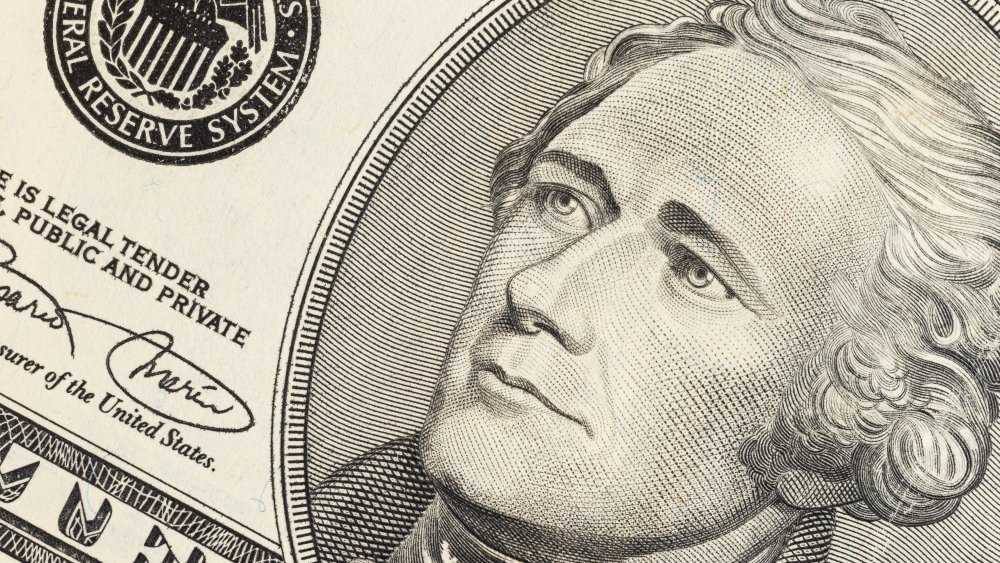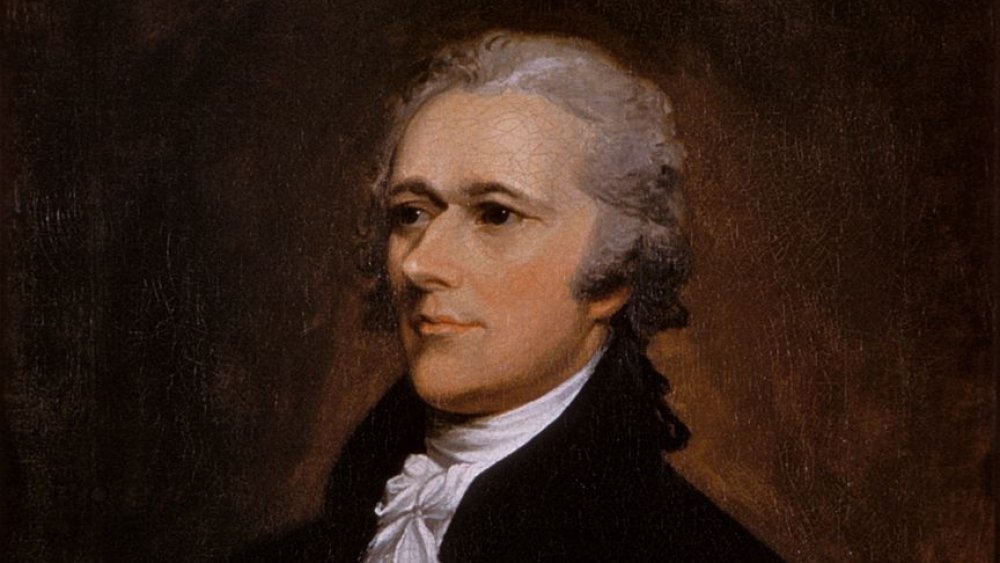The Truth About Alexander Hamilton's Affair
You know more about Alexander Hamilton than you think you do, partly thanks to Lin-Manuel Miranda and partly because his handsome face graces the United States $10 bill. A good many people can probably dredge up the fact that he died after being shot by Aaron Burr in a duel. Maybe not much after that, which is too bad, because Hamilton is generally acknowledged as one of the primary influences in the founding of the United States — some say, second only to George Washington himself.
Hamilton set up the economic system we use to this day (he was the first Secretary of the Treasury), helped write the Federalist Papers, a collection of essays, per the History website, written to support ratification of the Constitution of the United States. Hamilton is a major player in the founding of the country. Brilliant, but also arrogant; witty, but also dismissive; married, and the father of seven, but also a cheater. Consensus is, it's this last part that kept him out of the White House himself.
Brilliant, but arrogant as well
He was a brilliant attorney, so arguably, he really should have known better. It's not the first time people thought with their hormones instead of their heads. Hamilton was in his mid-30s and serving as Secretary of the Treasury when he was approached by a 23-year-old woman, Maria Reynolds, asking for financial assistance to escape what she characterized as an abusive marriage. After Hamilton and Reynolds became intimate, her husband, James, showed up and tried to blackmail Hamilton. And succeeded. Again, per History, Hamilton forked over the modern equivalent of about $25,000 but, with the encouragement of James, continued to see Maria on the side. The affair broke off in 1792, but James outed Hamilton anyway. Hamilton was confronted by future president James Monroe, among others. He came clean, showing letters he had received from Mr. and Mrs. Reynolds both.
Alas, his candor would come back to bite him. He had the temerity to attack Thomas Jefferson's intimate relationship with a female slave. Jefferson supporters struck back, using copies of the letters. In 1797 Hamilton published a pamphlet of his own which, according to Biography, detailed his sexual sins and transgressions and answered the charge that he'd used government funds to pay off James Reynolds (he hadn't). Unfortunately, while it might have cleared the air, it did destroyed his political career. The truth, as it tends to do, set Hamilton free — free of any chance of serving as President of the United States.

